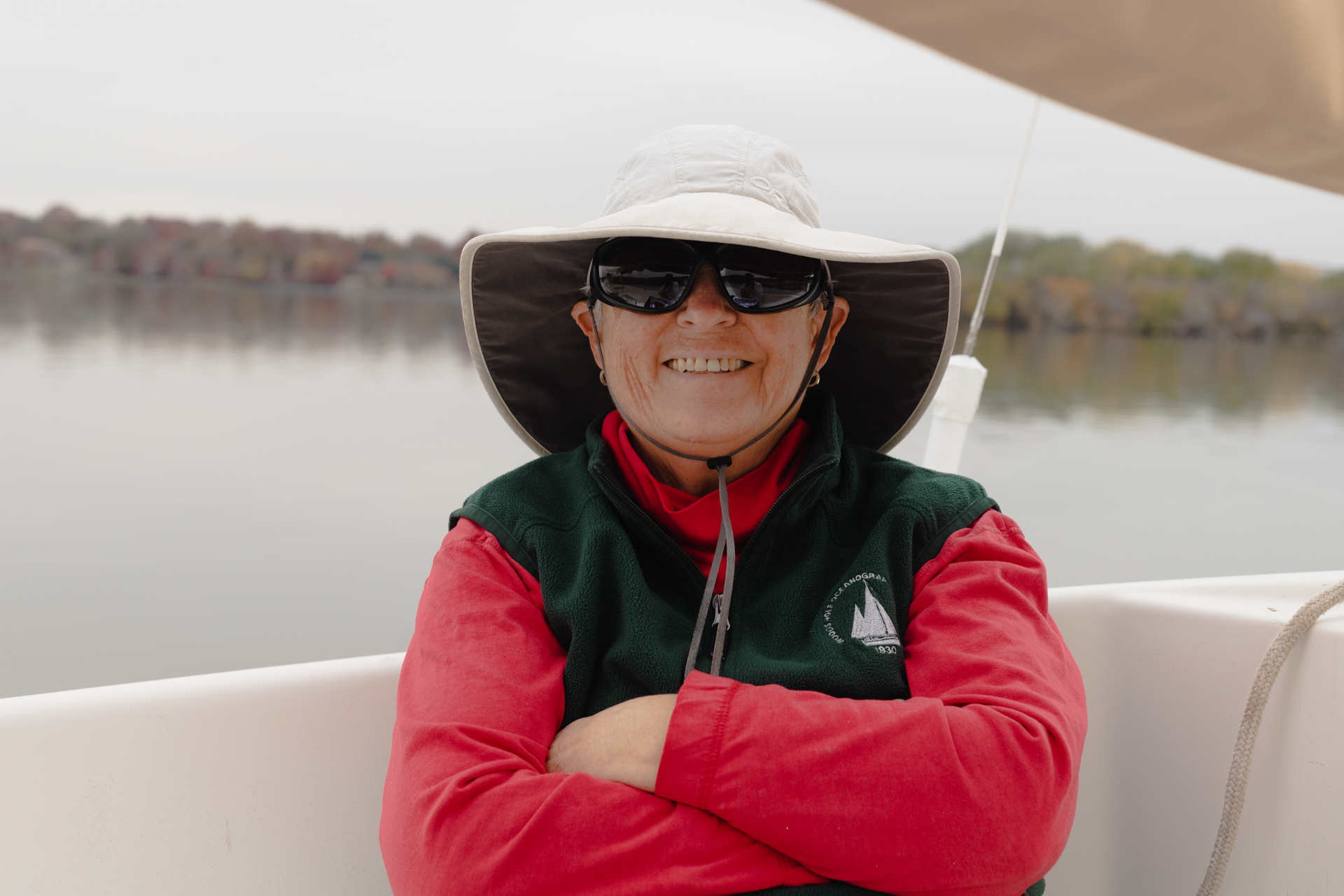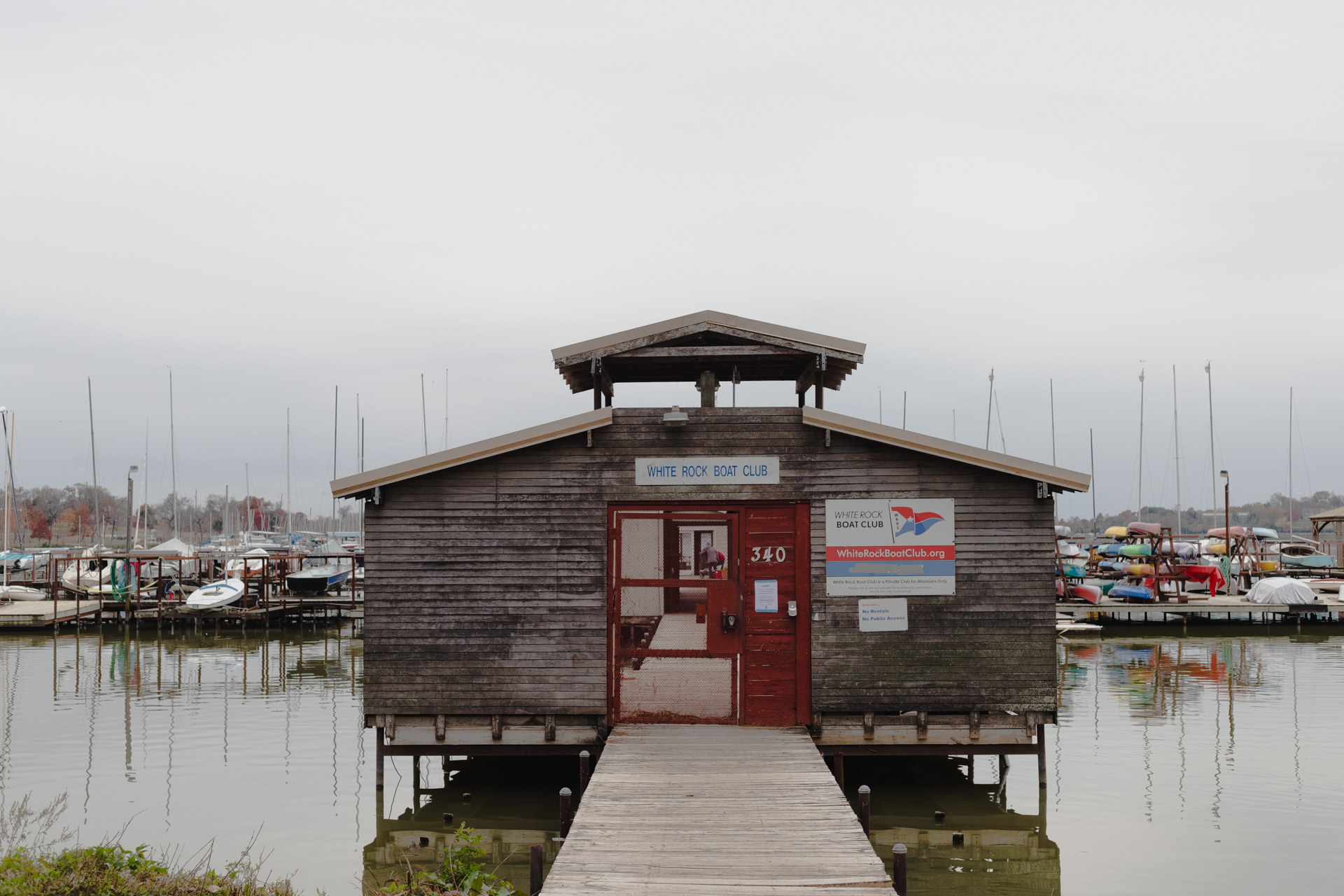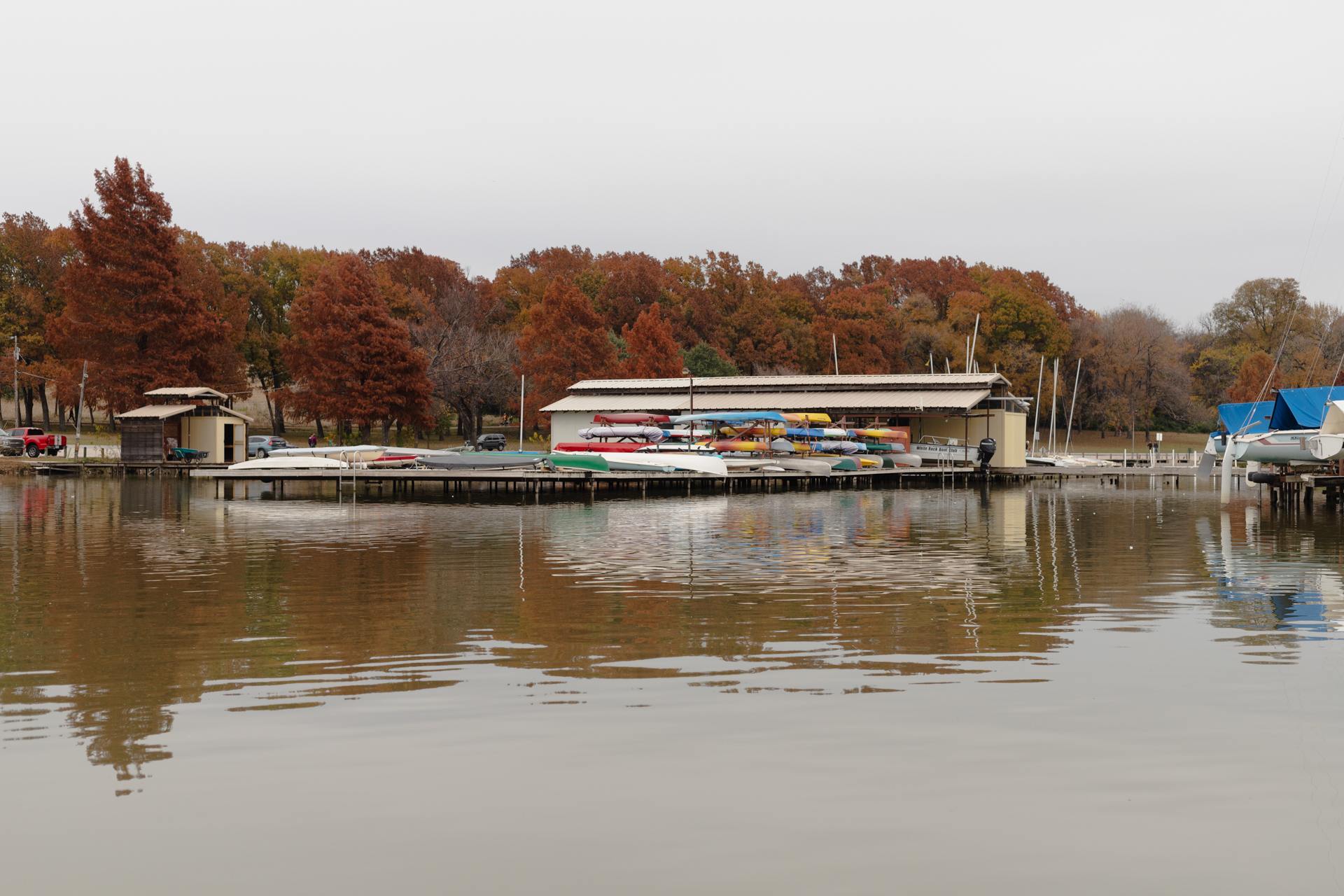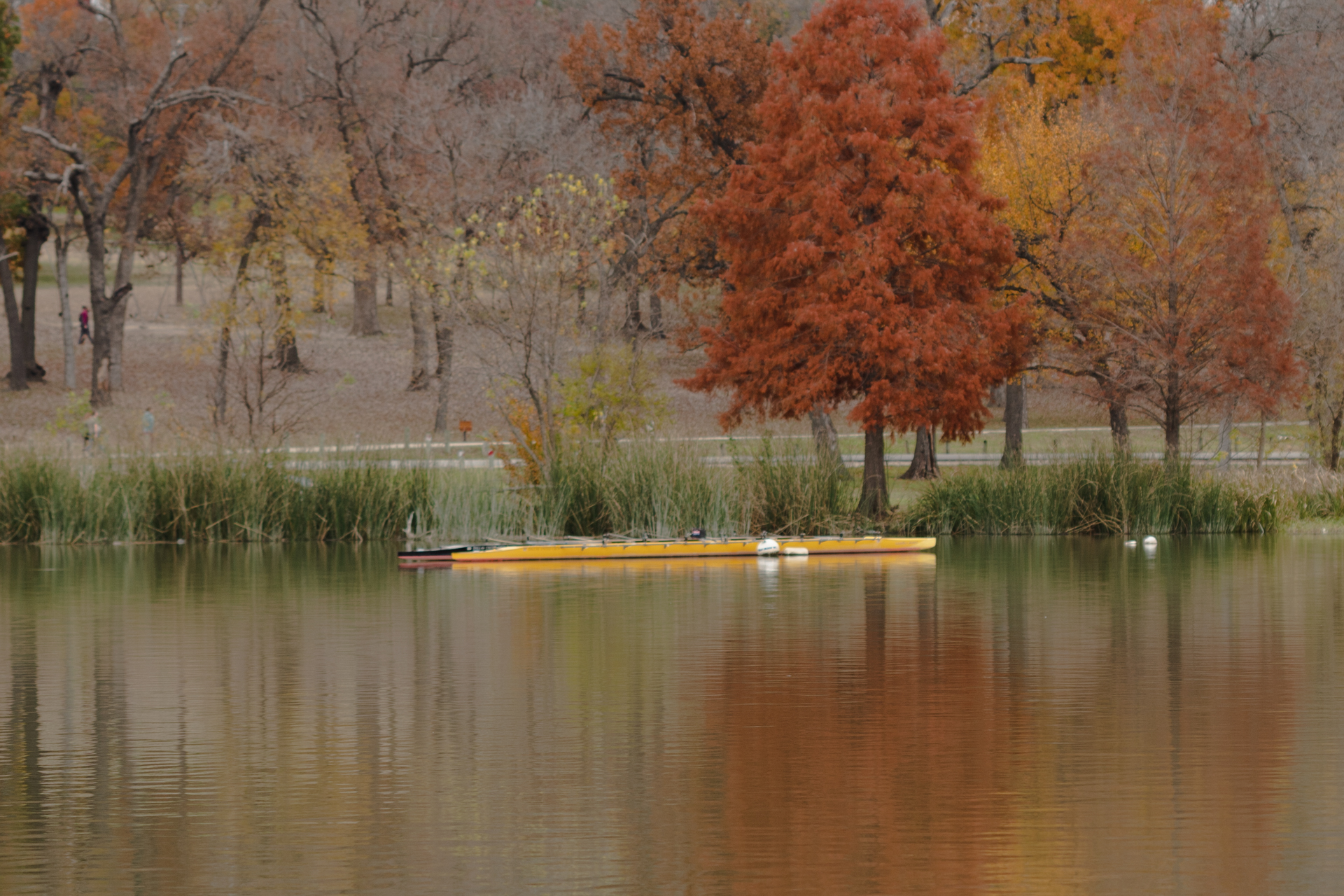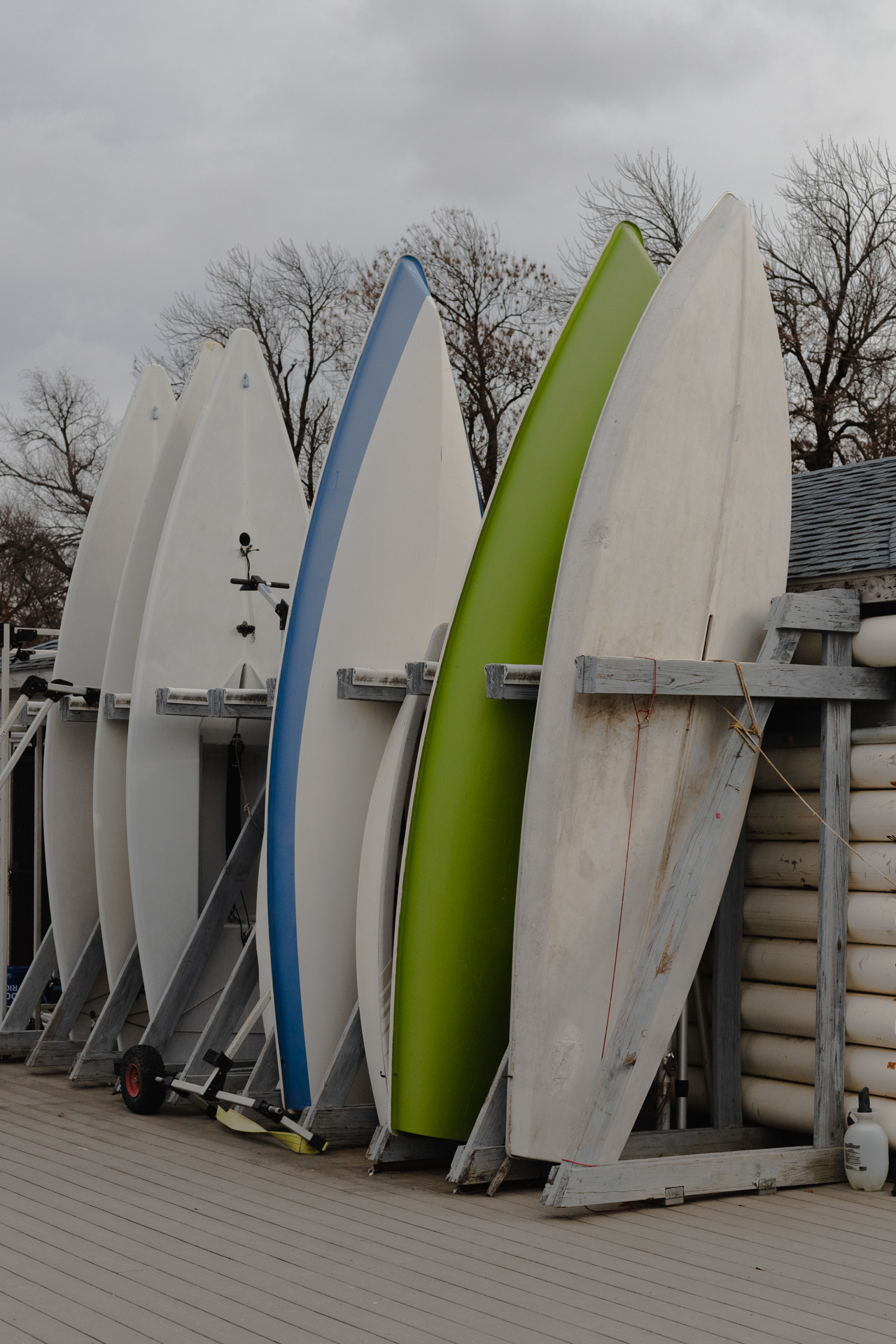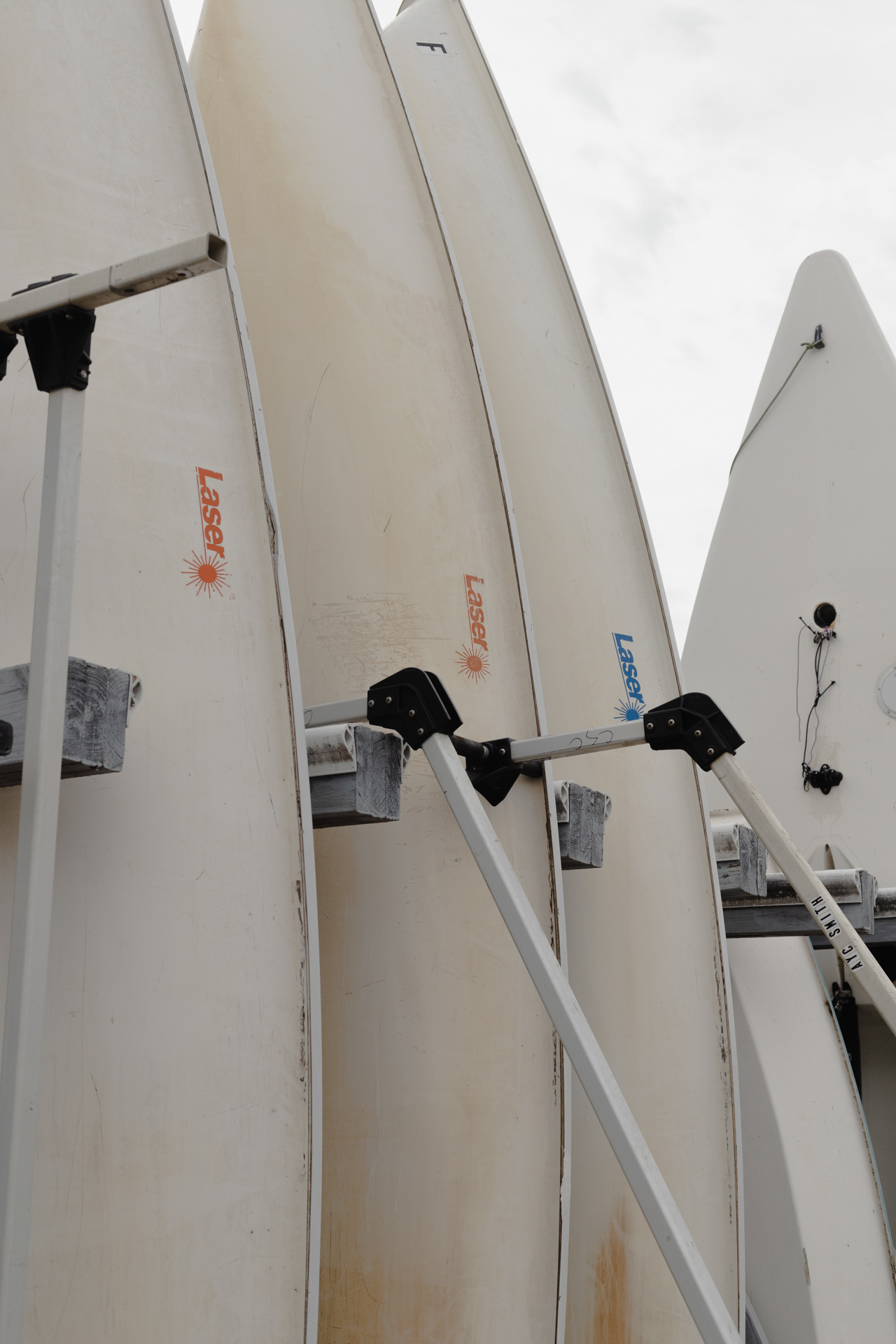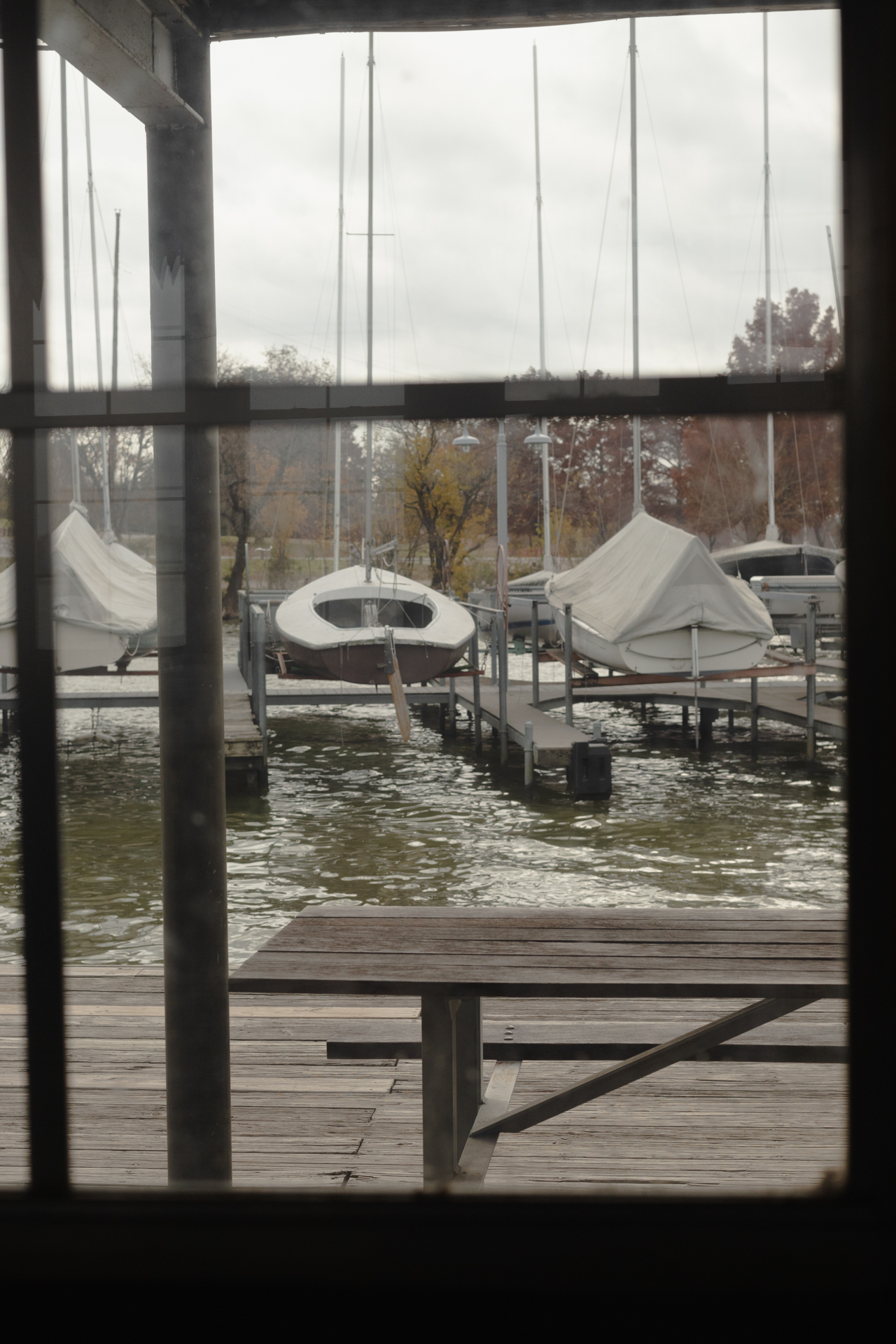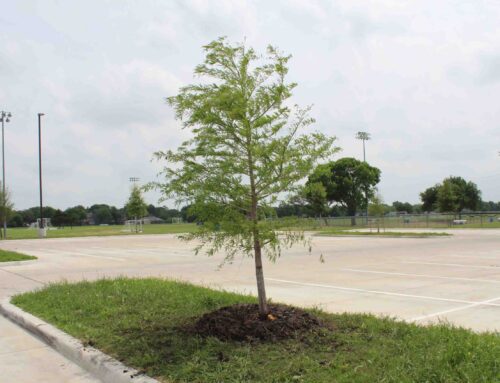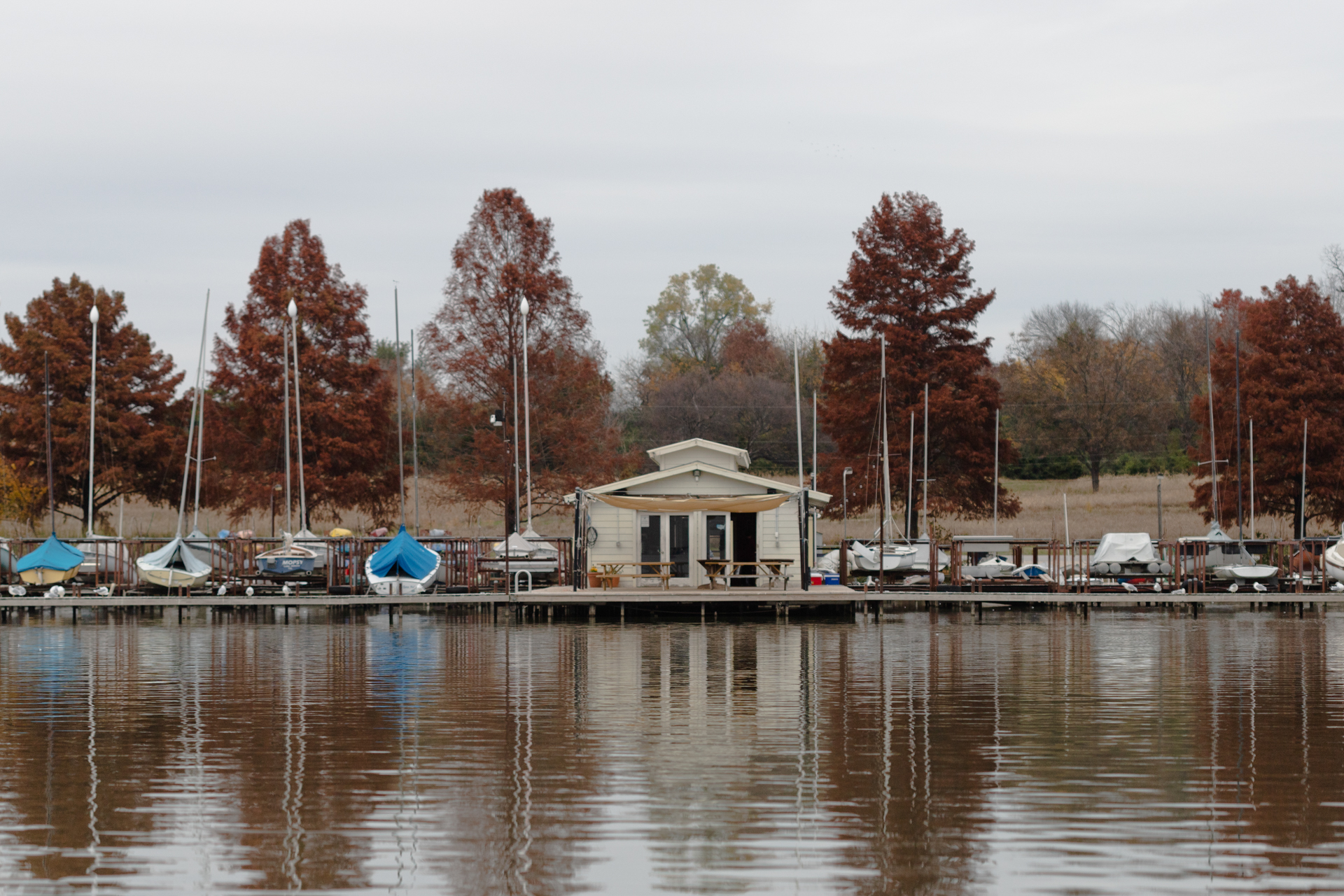
Boats at White Rock Boat Club at White Rock Lake. Photography by Jessica Turner.
Jeanne Tunks has always loved the water. But as a kid in Scott, a small town west of Lafayette, Louisiana, she couldn’t participate in watersports except at camp. During college, she became a water safety instructor for the Red Cross.
She taught people living with blindness, cerebral palsy and other conditions how to swim. Wanting to be a more effective teacher, she enrolled at a training school operated by the Red Cross in Mobile, Alabama.
A limited number of participants meant the students in Tunks’ program and those in the sailing program were merged into one class. She was learning how to sail.
“It was that first time on Mobile Bay, just not knowing what the heck it was going to be,” Tunks says. “But just really, there’s something about when you can capture the wind just right, and it pulls you along. And you’re just part of the elements of nature.”
Tunks and her husband, Tom, who used to sail on Lake Michigan, have been sailing at White Rock Lake for decades.
In addition to two rowing clubs, a handful of historical buildings and yet-to-be-unearthed artifacts from Dallas’ Davy Jones’ locker, White Rock Lake Park is home to two sailing clubs.
Corinthian Sailing Club and White Rock Boat Club, led by commodore Jeanne Tunks, differ in key ways. But at their essence, they host hundreds of people with a shared interest in being on the water.
Even the history of the clubs is intertwined. Corinthian was officially incorporated in 1939 by Tom Nash, Frank Parker and Wilfred Bruce. The story goes that a few people who had been sailing from a public pier on the northwest side of the lake were searching for deeper water. So they built a pier and eight slips where the north entrance of the club is today, along E. Lawther Drive.
By 1942, Corinthian had 22 members, and the primary boats used by members were snipes.
White Rock Boat Club started about two decades later. Three Corinthian members — brothers Phil and Pete Oetking and Henry Pittman — spearheaded the creation of the club in 1961, after their old club was having problems tracking davit ownership and the price of davits was increasing. The Oetkings had developed a catamaran called the Hellcat and needed a place to sell them. With help from Pittman, who financed construction, White Rock Boat Club was established to meet their needs.
Corinthian, built entirely over the water, has 183 boat slips and 70 board boat pads. All 380 member households sail; those who race and those who don’t each comprise about half of the total membership.
“There’s a boat for everyone,” says Renee Comen, the club’s commodore, whose term ended January 2023. “We have a guy that’s 90 years old that comes out and sails. We took our kids out when they were toddlers.”
Comen, who’s originally from New Mexico, started sailing at White Rock Lake in 1986.
“This guy said, ‘Hey, you want to come sail with me?’ And I said, ‘Yeah.’ I ended up marrying him,” she says.
Corinthian has several fleets, including Flying Scots, Snipes, Corinthians, RS Aeros and Lasers, plus 420s and Optimists for kids. In addition, they have members who participate in parasailing competitions. They share a butterfly fleet with White Rock Boat Club, which has more than 20 types of sailboats.
While 100% of the members at Corinthian have to sail, only 70% of the members at White Rock Boat Club face that requirement. The rest can have canoes, kayaks, paddle boards or rowboats.
The club, which has about half the membership of Corinthian, sponsors a Sea Scouts troop. Part of the Boy Scouts of America, the scouts have access to White Rock’s boats and facilities, and in return, they help with projects, such as building new picnic tables for the club house dock.
Members in both organizations don’t have to own boats, and all of them pay fees, which help cover maintenance and other costs incurred by the clubs. At White Rock, members can offset the costs by participating in work days or performing acts of service for the club.
Corinthian and White Rock, both all-volunteer organizations, are similar in their stewardship of the lake. They help pull logs and debris out of the water, and they participate in For the Love of the Lake’s monthly shoreline cleanups.
Both also face the challenges of dredging, or lack of it, freezes and flooding. Water levels have risen as high as the windows at Corinthian’s club house. When water recedes, White Rock has had to remove snakes from the club house.
From March until November, Corinthian hosts races four times per week. A few of the members travel across the nation to compete, and the club has even hosted a remote-controlled sailboat race.
White Rock is less competitive. There are some members who don’t own boats anymore but just come by to hang out. One man comes every Monday night with a group of people to play Rummikub on the dock. Others come to watch the sunset.
“I have a sailboat here, a canoe and two kayaks,” Tunks says. “OK, why do I need all these boats? Well, because if you like boats, you need them.”

